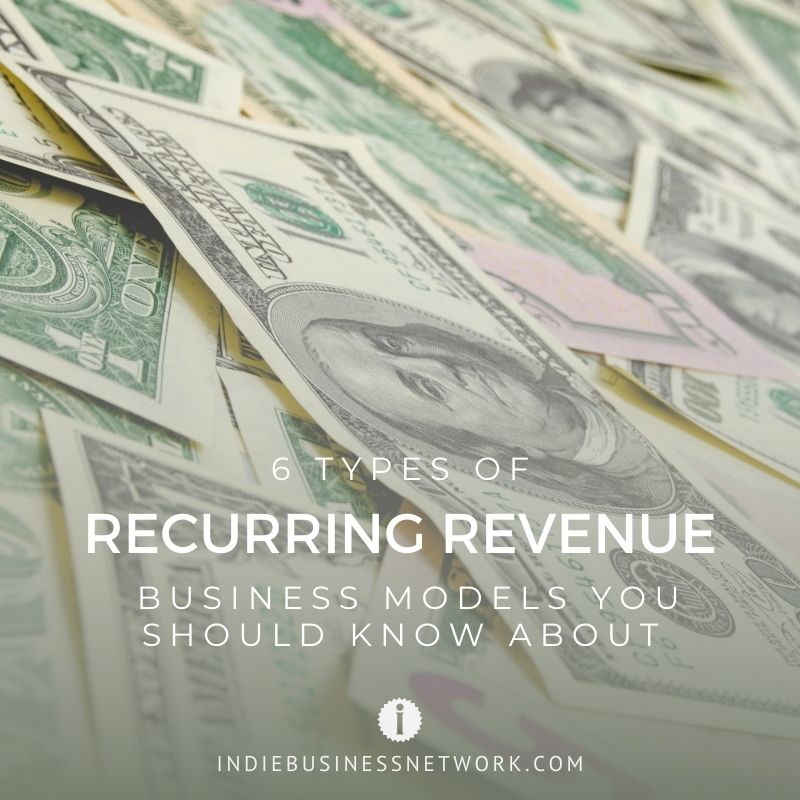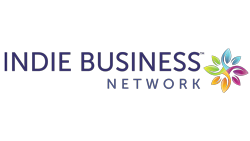There are six basic types of recurring revenue business models you should know about. Each has its own unique characteristics. I'm sure you can leverage at least one of these to generate endless repeat sales opportunities and create a fun and engaging community around your brand.

This overview is required prerequisite reading for everyone who has registered to attend the 5-Day Recurring Revenue Challenge Summit. When we talk about the six types of recurring revenue business models, these are the ones we are referring to.
1. Streaming entertainment services
Examples: Spotify, Netflix, Tidal, Pandora
A streaming entertainment service provides members with access to entertainment such as music, movies, and television shows in exchange for a set monthly price. Sometimes, the subscription price is lower (or even free) if ads are dispersed throughout the members's entertainment experience.
You may think that your business could not make use of a model like this. Maybe. Maybe not. If you are a candle making instructor, for example, you could use a service like YouTube to livestream candle making classes direct to members using a private YouTube link that only they can see. Once you start thinking outside the box, it is easy to see how a technology that is typically used by large companies can be used to add a recurring revenue, subscription and/or membership component to your business.
2. News and lifestyle media publications
Examples: New York Times, People Magazine, Black Enterprise Magazine, Reader's Digest, Afro News
A magazine or newspaper subscription entitles members to receive a physical and/or digital copy of the publication on a daily, monthly, or annual basis.
You may think that your business would not be able to create or sell any type of magazine, but if you did, you'd be incorrect. With so many free and low-priced online design services available, you could create a magazine that complements your products and the lifestyle of people in your target audience, and add a monthly membership that includes a print or digital copy of your monthly publication.
3. Software as a service
Examples: Dropbox, Adobe, Crafty Base
Instead of purchasing a software disc, software as a service is delivered to members on a subscription basis. The service exists “in the cloud,” meaning it is accessible from most standard laptops or computers, or smart phones. For example, Adobe charges members a certain periodic price in exchange for access to design and photo editing programs that members access using a password without having to deal with a physical disc.
Do you have a proprietary program you have developed to do such things as create recipes with the correct proportion of different ingredients, or craft fragrance blends to match certain types of moods or deliver specific aromatherapy benefits? Well, guess what? You may be able to deliver it to members on a subscription basis.
4. Auto-ship subscriptions
Examples: Amazon (select products), Urban Stems (flowers)
Sometimes referred to as “Subscribe & Save,” with an auto-ship subscription, members pay an automated flat periodic price, and you ship products to them at regular intervals. For example, a member buys the facial oil she loves every month for $50. With auto-ship, her credit card is securely and automatically charged each month, and the product is delivered to her monthly without her having to order it. Often, the member enjoys a discount on the product and/or. shipping as a part of the value exchange.
5. Curated subscription boxes
Examples: FM Farmhouse, FitFabFun
Subscription boxes are curated shipments of products designed around a certain lifestyle, community, theme or personality type. The member subscribes to the box by paying a set price periodically, and the subscription box is delivered based on a pre-arranged schedule.
A subscription box can be a business model unto itself, or it can be a part of a marketing strategy. A subscription box can contain as many as dozens of products, or just one. A box can also contain collections of ingredients or supplies needed to craft a certain project or product at home — like a meal kit or a kids craft project.
Our member over at FM Farmhouse is a great example!
6. Membership business models
Example: Carol's Daughter, Indie Business Network, Amazon Prime
A membership business model entitles people who pay recurring monthly, quarterly or annual membership dues to access benefits that non-members do not have access to. For example, members may pay $50 for access to a standing product discount and/or free shipping, early access to new product launches, and invitations to brand events that from which the general public is excluded.
Another example is a business like the Indie Business Network (what do you know?!) which, in exchange for monthly or annual membership dues, provides members with access to entrepreneurial training and coaching services, networking and promotional opportunities, and product liability insurance. These services are only available to our members.
Question
Do you have any recurring revenue, subscription, and/or membership components in your business? If so, what are they? If not, have you considered adding any? Are you registered for the 5-Day Recurring Revenue Challenge Summit? Share your story in the comments below!



